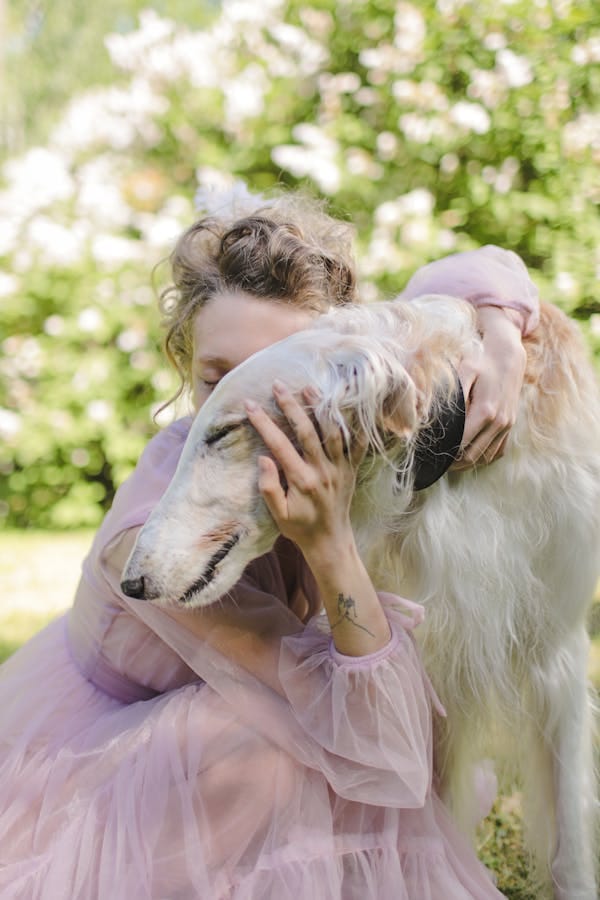- The Poodle Sitting Stance
- Why Do Poodles Sit This Way?
- Benefits of Proper Poodle Sitting
- Training Your Poodle to Sit Properly
- Expert Insight: The Importance of Proper Poodle Sitting
- Frequently Asked Questions (FAQS)
- Q: Is the poodle sit unique to this breed?
- Q: Do all poodles naturally sit this way?
- Q: Can sitting improperly harm my poodle?
- Q: How do I train my poodle to sit properly?
- Q: Can other sitting positions be harmful to my poodle?
- Q: How can I encourage my poodle to maintain the proper sitting form?
- Q: Are there any health conditions that could affect a poodle’s ability to sit properly?
- Conclusion
Poodles are known for their intelligence, elegance, and unique grooming styles, but did you know they also have a distinct way of sitting? Watching a poodle sit is a delightful sight, as they seem to do it with a sense of grace and poise. In this comprehensive guide, we’ll explore the fascinating world of poodle sitting habits, including the reasons behind their unique sitting styles, the benefits of proper sitting, and tips for training your poodle to sit on command.
The Poodle Sitting Stance
Poodles, whether standard, miniature, or toy, have a characteristic sitting stance that sets them apart from other breeds. When a poodle sits, they typically do so with their front legs neatly tucked under their body, their hindquarters slightly raised, and their tail curled elegantly over their back or to the side.
This sitting position is often referred to as the “poodle sit” or the “tuck sit,” and it’s a hallmark of the breed’s refined and graceful demeanor. It’s a posture that exudes confidence, attentiveness, and a sense of regal poise that poodles are famous for.
Why Do Poodles Sit This Way?
The unique poodle sitting stance has its roots in the breed’s history and conformation. Originally bred as water retrievers, poodles were designed to be agile and buoyant in the water. Their tightly curled coats helped protect them from the elements, while their strong hindquarters and tuck-up waistline allowed for efficient swimming and retrieving.
Over time, this functional conformation also influenced the way poodles sit on land. The tuck-up waistline and strong rear muscles naturally lend themselves to the tucked sitting position, providing stability and balance.
Additionally, poodles are highly intelligent and eager to please, traits that contribute to their ability to learn and maintain proper sitting form. Their attentiveness and desire to follow commands make it easier for them to adopt and maintain the poodle sit when trained.
Benefits of Proper Poodle Sitting
While the poodle sit may look like a mere display of elegance, it actually offers several benefits for the breed’s overall health and well-being:
- Spinal Alignment: The tucked sitting position helps maintain proper spinal alignment, reducing strain on the back and neck muscles.
- Hip and Joint Support: Sitting with the hindquarters slightly raised takes pressure off the hips and joints, which can be beneficial for older poodles or those prone to joint issues.
- Muscle Engagement: The poodle sit engages the core and hind leg muscles, helping to build strength and endurance.
- Posture and Balance: Maintaining the poodle sit requires balance and good posture, which can improve overall body awareness and coordination.
- Attention and Focus: The attentive sitting stance encourages focus and concentration, which can be advantageous during training sessions or obedience competitions.
Training Your Poodle to Sit Properly
While poodles may naturally lean towards the poodle sit, it’s still important to properly train them to sit on command. Here are some tips for teaching your poodle the perfect sit:
- Start Early: Begin training your poodle to sit as early as possible, ideally around 8-10 weeks of age when they’re most receptive to learning.
- Use Positive Reinforcement: Poodles respond well to positive reinforcement training methods. Use treats, praise, and affection to reward successful sitting attempts.
- Be Patient and Consistent: Consistency is key when training poodles. Use the same verbal cue (“sit”) and hand signal each time, and be patient as they learn.
- Practice in Different Environments: Once your poodle has mastered sitting at home, practice in different environments to reinforce the behavior in various settings.
- Use Luring Techniques: If your poodle is struggling, you can use luring techniques by holding a treat near their nose and slowly moving it back towards their hindquarters to encourage them to sit.
- Seek Professional Help: If you’re having trouble training your poodle to sit properly, consider seeking the guidance of a professional dog trainer or behaviorist.
Poodle Sitting Case Study
To illustrate the importance of proper sitting, let’s look at a real-life case study:
Coco, a 7-year-old standard poodle, had developed a habit of sitting with her legs splayed out to the side, putting unnecessary strain on her hips and back. Her owner, concerned about the potential long-term effects of this improper sitting posture, decided to seek the help of a professional dog trainer.
The trainer worked with Coco using positive reinforcement techniques, rewarding her with treats and praise every time she sat with her legs tucked neatly under her body. Initially, Coco struggled with the new sitting position, but with consistent practice and patience, she gradually began to adopt the proper poodle sit.
After several weeks of training, Coco had mastered the poodle sit, and her owner noticed a significant improvement in her overall posture and mobility. The proper sitting position helped alleviate the strain on her hips and back, and she appeared more comfortable and energetic during daily activities.
This case study highlights the importance of teaching and reinforcing the correct sitting position for poodles. By taking the time to train and reinforce the poodle sit, owners can help ensure their furry companions maintain proper body alignment, reduce strain on joints and muscles, and enjoy a higher quality of life.
Expert Insight: The Importance of Proper Poodle Sitting
To provide further insights on the significance of proper sitting in poodles, let’s hear from Dr. Sarah Johnson, a certified veterinary orthopedic specialist:
“Proper sitting form is essential for poodles, as it helps maintain optimal spinal alignment and joint health,” explains Dr. Johnson. “The poodle sit, with its tucked-in front legs and slightly raised hindquarters, is the ideal sitting position for this breed.”
Dr. Johnson emphasizes that improper sitting habits can lead to long-term musculoskeletal issues, such as hip dysplasia, arthritis, and back problems. “When poodles sit with their legs splayed out or their hindquarters flat on the ground, it puts unnecessary strain on their joints and spinal column.”
To prevent these issues, Dr. Johnson recommends training poodles from an early age to sit properly. “Positive reinforcement training methods, coupled with patience and consistency, can help poodles learn and maintain the correct sitting form.”
In addition to proper sitting, Dr. Johnson stresses the importance of maintaining a healthy weight and providing regular exercise for poodles. “Excess weight and lack of activity can exacerbate joint and spinal issues, so it’s crucial to keep poodles at a healthy weight and provide plenty of low-impact exercises like walking or swimming.”
For poodles already experiencing joint or spinal issues, Dr. Johnson suggests seeking veterinary guidance for appropriate treatment options, such as physical therapy, medication, or even surgical intervention in severe cases.
By prioritizing proper sitting form, maintaining a healthy weight, and providing regular exercise, poodle owners can help ensure their furry companions enjoy a lifetime of mobility, comfort, and overall well-being.
Tables and Additional Resources
| Poodle Sitting Styles | Description | Benefits |
|---|---|---|
| Poodle Sit (Tuck Sit) | Front legs tucked under body, hindquarters slightly raised, tail curled | Maintains spinal alignment, supports hips and joints, engages core muscles |
| Puppy Sit | Front legs splayed out in front, hindquarters flat on ground | Comfortable for puppies but can lead to joint issues if maintained |
| Lazy Sit | Lying on one hip with legs extended | Comfortable resting position but not ideal for prolonged periods |
For more information on poodle sitting habits, training techniques, and maintaining joint health, check out these reliable resources:
Remember, teaching your poodle to sit properly is essential.
Frequently Asked Questions (FAQS)
Q: Is the poodle sit unique to this breed?
A: While the “tuck sit” is commonly associated with poodles, some other breeds like the French bulldog and Boston terrier may also naturally sit in a similar tucked position. However, poodles are particularly renowned for their elegant and polished sitting stance.
Q: Do all poodles naturally sit this way?
A: Not all poodles will automatically sit in the poodle sit without training. While their breed conformation lends itself well to this sitting position, consistent positive reinforcement training is still necessary to reinforce the desired behavior.
Q: Can sitting improperly harm my poodle?
A: Yes, improper sitting habits, such as sitting with the legs splayed out or the hindquarters flat on the ground, can put unnecessary strain on your poodle’s joints, hips, and spine over time. This can potentially lead to issues like arthritis, hip dysplasia, or back problems, especially in older poodles or those predisposed to joint issues.
Q: How do I train my poodle to sit properly?
A: Start training your poodle to sit properly from an early age (around 8-10 weeks old). Use positive reinforcement techniques, such as treats, praise, and affection, to reward successful sitting attempts. Be patient, consistent, and practice in various environments. If needed, seek guidance from a professional dog trainer or behaviorist.
Q: Can other sitting positions be harmful to my poodle?
A: While the “puppy sit” (with front legs splayed out) is perfectly fine for young puppies, it’s best to transition them to the proper poodle sit as they grow older to avoid potential joint strain. The “lazy sit” (lying on one hip with legs extended) is a comfortable resting position but should not be maintained for prolonged periods.
Q: How can I encourage my poodle to maintain the proper sitting form?
A: Consistently reinforce the poodle sit with treats and praise during training sessions and everyday interactions. Avoid rewarding or reinforcing improper sitting positions. Additionally, maintaining a healthy weight and providing regular exercise can help strengthen the muscles needed for proper sitting.
Q: Are there any health conditions that could affect a poodle’s ability to sit properly?
A: Yes, certain health issues like hip dysplasia, arthritis, or spinal problems can make it difficult or uncomfortable for a poodle to maintain the tucked sitting position. In these cases, it’s best to consult with your veterinarian for appropriate management and accommodations.
By addressing these common questions and concerns, poodle owners can better understand the importance of proper sitting habits and take proactive steps to ensure their furry companions maintain optimal joint health, posture, and overall well-being.
Conclusion
Watching a poodle sit with grace and elegance is a delightful sight, but it’s more than just a display of poise – it’s a crucial aspect of their overall health and well-being. By understanding the benefits of the poodle sit, training your furry companion from an early age, and maintaining a consistent reinforcement routine, you can help ensure your poodle maintains proper spinal alignment, joint health, and muscular engagement.
Remember, the poodle sit is more than just a posture; it’s a reflection of the breed’s intelligence, trainability, and desire to please. By prioritizing proper sitting habits, you not only cultivate your poodle’s natural elegance but also contribute to their long-term comfort and mobility.
So, the next time you see your poodle sit with their legs neatly tucked, their hindquarters slightly raised, and their tail curled with poise, take a moment to appreciate the beauty and significance of this simple yet remarkable behavior. It’s a testament to the unique bond between poodles and their owners, and a reminder of the importance of promoting their overall well-being through proper training and care.































